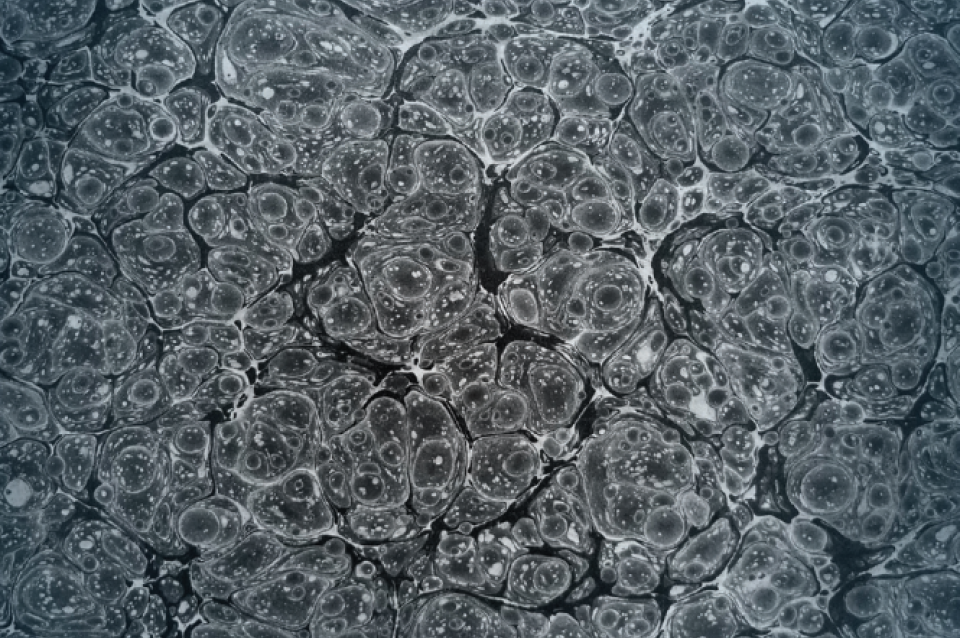March 31, 2017
Stuart Weitzman School of Design
102 Meyerson Hall
210 South 34th Street
Philadelphia, PA 19104
Get the latest Weitzman news in your Inbox
Media Contact
Michael Grant
mrgrant@design.upenn.edu
215.898.2539
LA+ is the interdisciplinary journal produced out of the Department of Landscape Architecture. Teams of students work alongside Chair of Landscape Architecture Richard Weller, and Editor-in-Chief Tatum Hands to produce the biannual journal. The most recent issue, LA+ Simulation, edited by faculty members Karen M'Closkey and Keith VanDerSys, addresses how recent technologies have changed how we understand the nature of nature.
Synthetic biology eludes conclusive definition. As an incipient field, discipline, project, or ambition, it takes neither a singular form, nor does its membership (which is heterogeneous) practice in a synchronized manner.1 Nonetheless, synthetic biologists have clustered into semi-distinct factions, each of which has its own particular understanding of the field and its own particular ways of practicing. Among these is a group that promises to deliver a field of ‘true’ or ‘authentic’ engineering – a field that will carry on as do existing, established disciplines of engineering, but with a living substrate.2 The group argues that achieving this aim demands the importing and deployment of principles, ideas, and forms of work from traditional engineering.3 These components, the synthetic biologists argue, will ensure ‘true’ engineering by shaping the new field using established engineering as a model.
This same group dedicates special attention and effort to one principle and practice: rational design. In laying out his vision for synthetic biology, Drew Endy proposes to replace the existing “expensive, unreliable and ad hoc research process” with what Tom Knight describes as “the intentional design, modeling, construction, debugging, and testing of artificial living systems.”4 Put simply, these researchers and others hope to make planning and building with living stuff as systematic and standardized as building with things like electronic circuitry. Rational design in synthetic biology hinges in part on simulations of living nature as technological artifice. These simulations in turn rely on representations of biology as something that carries an inherent potential for rational design.
In 2010 and 2011, an interdisciplinary, innovative project entitled “Synthetic Aesthetics” paired synthetic biologists with artists and designers in collaborative projects aimed at exploring just what design entails in synthetic biology.5 Each pair was given funds to support spending an equal amount of time in the lab and in the studio, along with freedom to explore design as they saw fit. One of these teams—synthetic biologist Fernan Federici and architect David Benjamin—placed rational design and digital simulation at the crux of their work. As already noted, rational design is central to the engineering faction of synthetic biology; digital simulation is one tool that these practitioners have proposed to assist their design work.6 The results of Federici and Benjamin’s project offer a useful perspective from which to examine many important aspects of synthetic biology’s pursuit of rational design. Federici and Benjamin’s digital simulations of plant cell growth rested on a collection of representations akin to many of those frequently used in synthetic biology. Most importantly, these representations all involve casting living things as entities carrying design potential. For Federici and Benjamin, plant cells were conceived as logical problem solvers; for synthetic biology, all manner of biological stuff is rationally designable material. In both cases, the practitioners do not capture a singular and freestanding ‘nature of nature’ but instead deliver a nature consistent with their nature.
Notes
1 Adam Arkin, et al., “Synthetic Biology: What’s in a Name?” Nature Biotechnology 27, no. 12 (2009).
2 Drew Endy, “Foundations for Engineering Biology,” Nature 438, no. 24 (2005); Endy, “Synthetic Biology: Can We Make Biology Easy to Engineer?” Industrial Biotechnology 4, no. 4 (2008); Susanna C. Finlay, “Engineering Biology? Exploring Rhetoric, Practice, Constraints and Collaborations within a Synthetic Biology Research Centre,” Engineering Studies 5, no. 1 (2013).
3 Ernesto Andrianantoandro, et al., “Synthetic Biology: New Engineering Rules for an Emerging Discipline,” Molecular Systems Biology 2 (2006); Vincent De Lorenzo & Antoine Danchin, “Synthetic Biology: Discovering New Worlds and New Words,” EMBO Reports 9, no. 9 (2008).
4 Endy, “Foundations for Engineering Biology,” 449; Tom Knight, “Engineering Novel Life,” Molecular Systems Biology 1 (2005): 1.
5 Daisy Ginsberg, et al., Synthetic Aesthetics: Investigating Synthetic Biology’s Designs on Nature (Cambridge, MA: MIT Press, 2014).
6 Priscilla E. M. Purnick & Ron Weiss, “The Second Wave of Synthetic Biology,” Nature Review Molecular Cell Biology 10, no. 6 (2009).


 Expand Image
Expand Image


